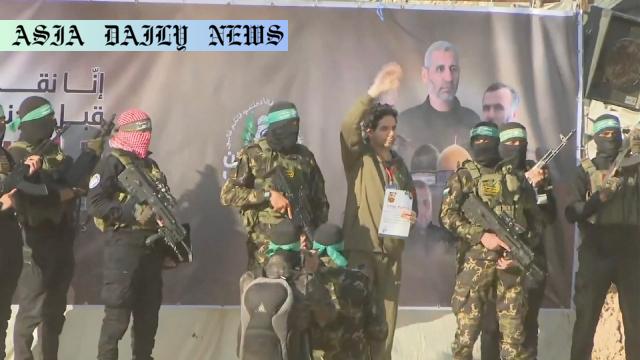Ceasefire: Hamas releases 3 Israeli hostages while Israel frees 183 Palestinian prisoners in an ongoing exchange under the truce.
- Ceasefire results in 3 more Israeli hostages being released.
- 183 Palestinian prisoners freed by Israel as part of the exchange.
- First medical evacuations allowed through Gaza’s Rafah border.

Ceasefire Agreement in Action
Under the recently initiated six-week ceasefire agreement in the Gaza Strip, progress continues to unfold as both Hamas and Israel execute their respective commitments. On Saturday, Hamas released three Israeli hostages, a development that brings the total number of freed Israeli captives to 13. This release is part of a broader deal that includes an eventual phased liberation of 33 Israeli hostages who were detained by Hamas.
Prisoner Exchange: A Catalyst for Change
In exchange for the release of Israeli hostages, Israel has freed 183 Palestinian prisoners, demonstrating mutual cooperation within the terms of the agreement. This move aims to reduce tensions and foster trust between the two sides in a region where conflict has deeply affected both communities. The exchange marks a significant step in addressing humanitarian concerns, particularly for families on both sides who have endured prolonged separations and uncertainties.
Humanitarian Relief through Medical Evacuations
As part of the ceasefire agreement, humanitarian efforts are gaining momentum, with medical evacuations from Gaza resuming through the Rafah border crossing into Egypt. This marks the first movement of this kind since May of the previous year. On Saturday, 50 injured and sick individuals were transported into Egypt for crucial medical attention. The World Health Organization (WHO) estimates that approximately 14,000 individuals in Gaza are still in dire need of medical care, underscoring the significance of accelerating such evacuations.
Role of International Stakeholders
International organizations and mediating nations have been pivotal to the execution of this ceasefire agreement. Qatar, which has played a notable role in the negotiations, facilitated the process of the hostage release and prisoner exchange. Additionally, the involvement of the World Health Organization emphasizes the urgent necessity of humanitarian interventions to address the critical medical needs of Gaza’s population.
Broader Implications
The current developments within the ceasefire expose both the challenges and opportunities inherent in diplomatic negotiations. If sustained, such agreements have the potential to alleviate longstanding tensions and pave the way for a more lasting resolution to conflicts in the region. The efforts to address humanitarian concerns, including the recent medical evacuations, signal the positive impact international cooperation can have on mitigating human suffering during times of crisis.
What Lies Ahead
The ceasefire agreement is only in its initial stages and has a long road before completion. The continuation of hostilities depends on how both sides approach their commitments over the remaining weeks. For the residents of both Israel and Gaza, the hope remains that such agreements can lay the groundwork for broader reconciliation and peace discussions.



Commentary
A Humanitarian Shift Amidst Conflict
The recent developments surrounding the ceasefire agreement offer a glimmer of hope in a region often marked by relentless conflict and loss. The exchange of hostages and prisoners demonstrates that even amidst entrenched disputes, mutual agreements aimed at reducing human suffering are indeed possible. This underscores the power of diplomacy and the critical need for sustained dialogue between conflicting parties.
Symbolic Progress in a Complex Region
The release of hostages and prisoners is symbolic of a broader aspiration for peace and reconciliation. While it does not mark the end of all conflicts, it is a crucial step toward providing relief to people who have been caught in a cycle of uncertainty and despair. In particular, the resumption of medical evacuations for Gaza’s injured and sick population is an essential milestone that addresses immediate life-saving needs.
The Role of Global Partners
It is also worth noting the important role played by international mediators and organizations. Their involvement serves as a reminder of how collective global action can make a substantial difference in resolving localized crises. Such interventions not only provide physical relief but also inject much-needed optimism into what may otherwise seem like an insurmountable impasse.
Looking Toward a Better Future
While the current ceasefire agreement is an encouraging development, it is by no means a solution to all the tensions and hardships in the region. It does, however, show that steps toward coexistence and understanding—no matter how challenging—are both possible and necessary. The world watches with cautious optimism, hoping that this ceasefire agreement leads to deeper, more transformative change for all affected by this long-standing conflict.